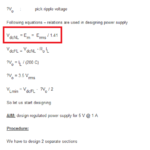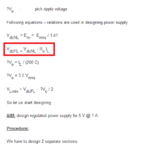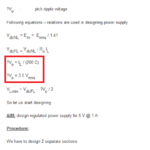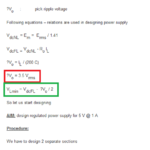Eshal
Advanced Member level 1
- Joined
- Aug 29, 2012
- Messages
- 470
- Helped
- 16
- Reputation
- 32
- Reaction score
- 15
- Trophy points
- 1,298
- Location
- Nowhere :)
- Activity points
- 5,149
Hello all.
Here is the website I am using for help as my project.
**broken link removed**
This image is extracted from the above link.

Can you tell me where does the red box formula come? How to derive this formula?
I know 1.41 is the drop of the bridge but this formula doesn't seems to be correct to me. Help me.
Thanks.
Here is the website I am using for help as my project.
**broken link removed**
This image is extracted from the above link.

Can you tell me where does the red box formula come? How to derive this formula?
I know 1.41 is the drop of the bridge but this formula doesn't seems to be correct to me. Help me.
Thanks.


